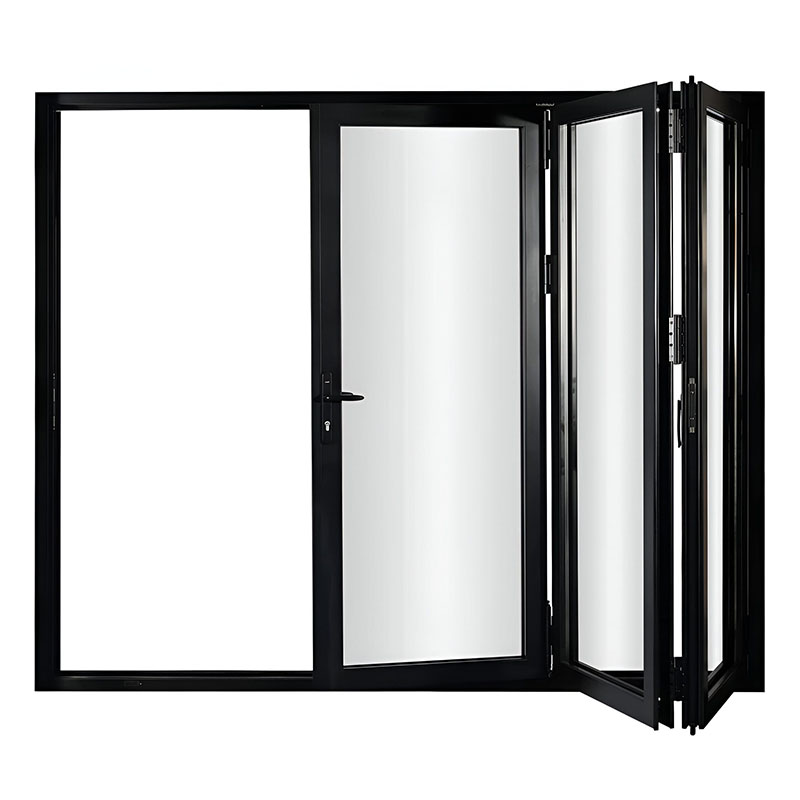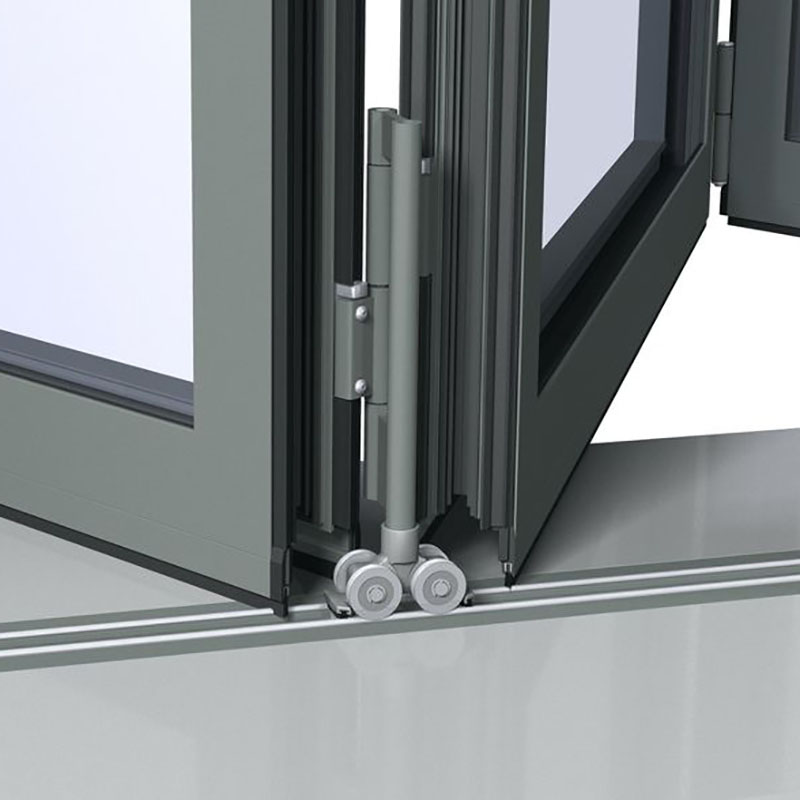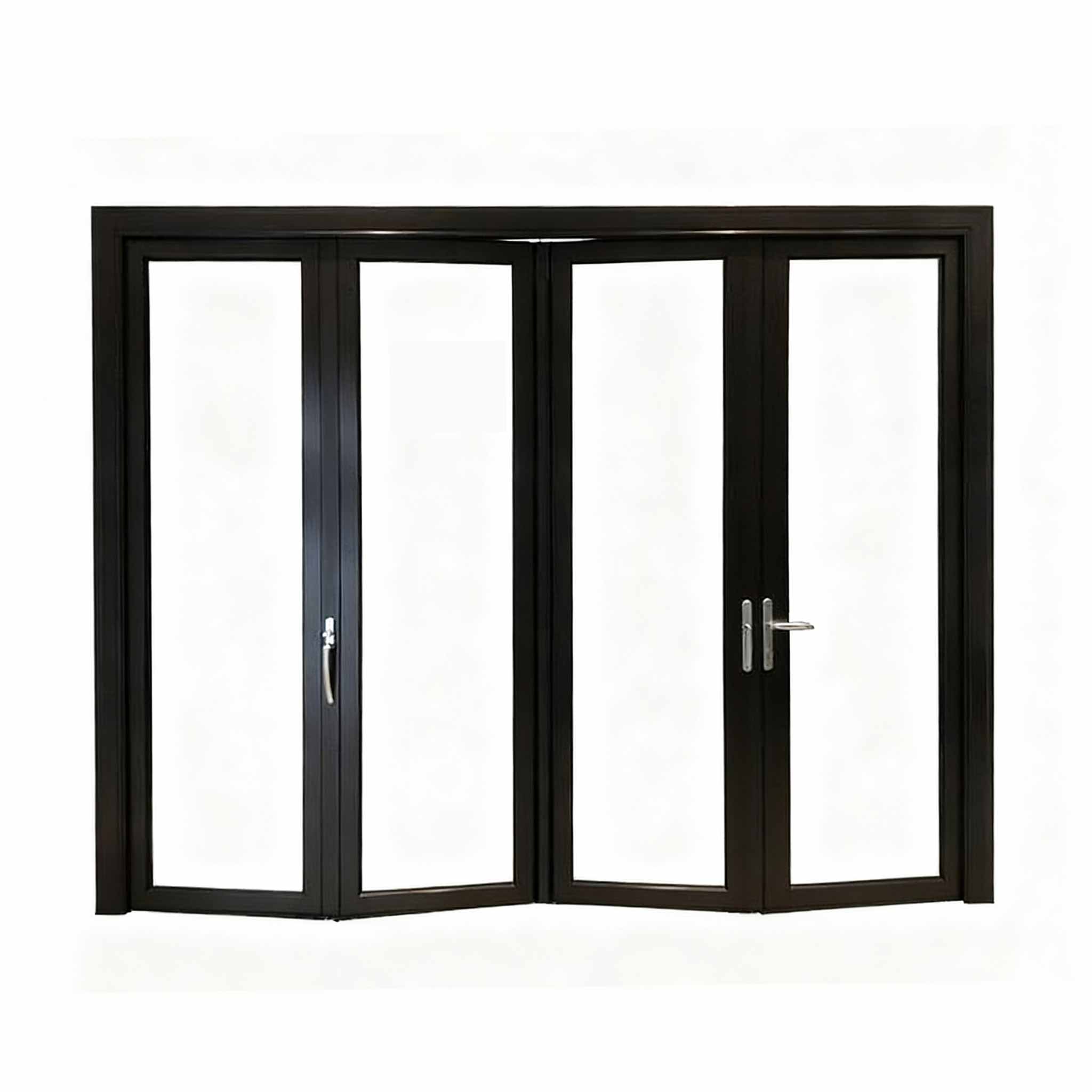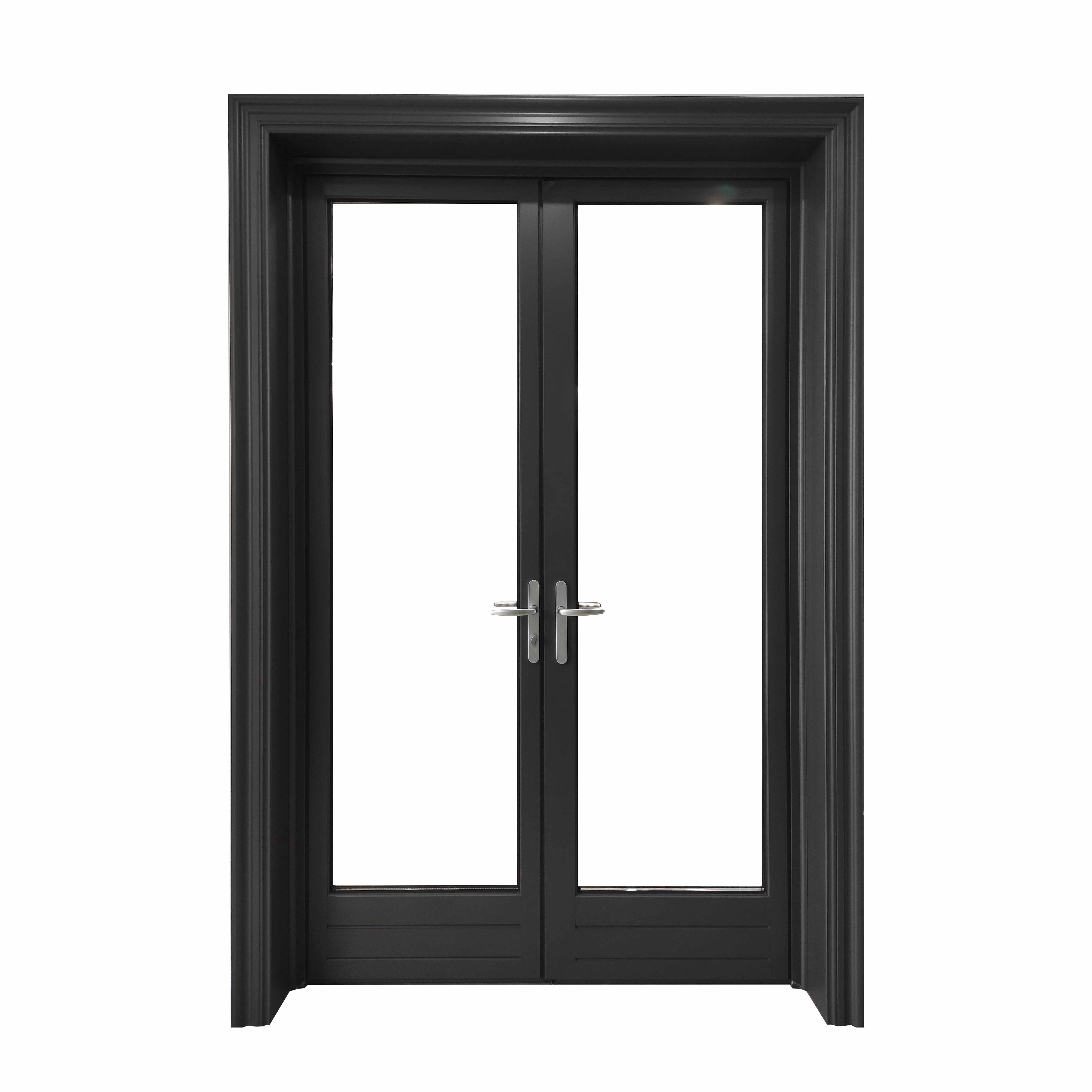The seamless transition offered by aluminium bifold exterior doors makes them a premier choice for connecting homes to outdoor spaces. Yet, a crucial technical decision arises: Does a bifold door require a bottom track? The answer significantly impacts performance, aesthetics, and longevity. As a specialist manufacturer of custom made folding doors, we dissect this critical choice, examining mechanics, design trends, and practical realities for modern aluminium systems. Understanding the nuances is vital whether you're planning installing bifold doors in a renovation or specifying them for a new build.
1. Innovation & Aesthetics: The Allure of Bottom-Track-Free Systems
Driven by demand for ultra-minimalist design and accessibility, manufacturers now offer aluminium bifold exterior doors that eliminate the visible bottom track. These "trackless" or "low-threshold" systems, often grouped under folding sliding doors for their operation, present compelling advantages:
Enhanced Accessibility & Safety: A flush threshold is a major benefit, eliminating a trip hazard. This is crucial for wheelchair users, those with mobility aids, children, and pets, making installing bifold doors with this feature a key consideration for inclusive design. It also simplifies moving furniture.
Effortless Cleaning: Without a track groove to trap dirt, leaves, or debris, maintaining the area becomes significantly easier – a practical perk for busy households choosing folding sliding doors for patios or gardens.
However, achieving this sleek look with aluminium bifold exterior doors necessitates complex engineering and has inherent limitations:
Critical Weight Redistribution: The entire load of the moving panels shifts to the top track and sophisticated pivoting hardware.
This demands:
Pinpoint Installation Precision: Installing bifold doors without a bottom track requires near-perfect level alignment of the top track and meticulous calibration of pivots. Minor errors cause binding, misalignment, or stress fractures. Expertise is non-negotiable.
Superior Structural Support: The lintel above must handle concentrated downward forces without deflection – a key consideration during planning for folding sliding doors.
Stability & Alignment Vulnerability: Without the bottom guide, panels rely solely on top hardware and their own rigidity for stability. Wind loads can more easily push panels out of alignment, potentially requiring more frequent adjustment – a factor for exposed aluminium bifold exterior doors.
Advanced Seal Demands: Heavy-duty, multi-point compression seals on the door bottom must maintain consistent, high-pressure contact across the entire width and lifespan. Achieving this reliably is harder than with a guided track system, critical for weather-tight soundproof bifold doors.
Size and Weight Restrictions: Due to top-load reliance, bottom-track-free aluminium bifold exterior doors typically face stricter limits on panel size, weight, and overall configuration compared to tracked systems. They suit smaller openings or lighter configurations best.
Premium Investment: The specialised hardware, complex installation (increasing labour costs for installing bifold doors), and potential floor modifications make these systems significantly more expensive than standard tracked folding sliding doors.
The Verdict on Innovation: Bottom-track-free aluminium bifold exterior doors offer stunning aesthetics and accessibility but involve compromises in capacity, potential stability, sealing complexity, and cost.

2. Proven Performance: The Enduring Role of the Bottom Track
For most applications, particularly robust aluminium bifold exterior doors, the bottom track remains the engineering cornerstone for reliability. Its functions are fundamental:
Essential Load Bearing & Distribution: Folding sliding doors, especially large multi-panel configurations, are heavy. While aluminium is lighter than wood, substantial glazing adds significant weight. The bottom track, equipped with heavy-duty rollers, bears the brunt of this load, distributing it evenly to the floor. Without it, excessive stress on the top track causes sagging, misalignment, premature wear, and potential failure – a critical failure point for custom made folding doors designed for size.
Guaranteed Smooth, Guided Operation: The track acts as a precision rail, ensuring panels glide smoothly and remain perfectly aligned vertically and horizontally as they fold. This prevents wobbling, drifting, or collisions during operation – essential for the effortless feel expected from premium folding sliding doors.
Superior Threshold Integration & Weather Defence: The bottom track seamlessly integrates with the threshold, forming the foundation for effective weather sealing. Engineered systems incorporate drainage channels and high-performance seals (EPDM, brush) along the entire length. This robust barrier is vital for preventing water ingress, drafts, dust, and insects – absolutely crucial for reliable soundproof bifold doors and any aluminium bifold exterior doors exposed to elements. Achieving comparable sealing without a track is exceptionally difficult.
Enhanced Security: When closed and locked, panels seated securely within a bottom track are far more resistant to being lifted or forced from below than those relying solely on top support – a vital security layer for ground-floor aluminium bifold exterior doors.
Foundation for Soundproofing: A well-sealed bottom track integrated with acoustic seals is fundamental to the performance of soundproof bifold doors. It blocks a major pathway for noise transmission, complementing acoustic glazing and seals elsewhere. Installing bifold doors for noise reduction heavily relies on this integrated track-seal system.
The Proven Choice: For heavy, large, or exposed aluminium bifold exterior doors, locations requiring maximum weather tightness (coastal, rainy), essential security, or superior soundproof bifold doors performance, a bottom track is indispensable. It offers unmatched robustness, reliability, and long-term performance. Recessed track options minimise visual impact while retaining functionality, a popular choice for sleek custom made folding doors.
3. Selecting Your Optimal System:
Choosing between tracked and trackless systems for your aluminium bifold exterior doors involves careful consideration of multiple factors. As a manufacturer specialising in custom made folding doors, we guide clients through these critical decisions daily:
Application is Paramount:
Exterior Doors: Strongly recommend a bottom track (standard or recessed) for aluminium bifold exterior doors. Weather exposure, security needs, and typical size/weight make it essential for performance and durability. This is non-negotiable for reliable soundproof bifold doors.
Door Specifications Matter: Large, heavy, multi-panel custom made folding doors demand the structural integrity of a bottom track. Smaller, lighter configurations are more suitable for trackless designs. Always check manufacturer weight/size limits for trackless aluminium bifold exterior doors.
Performance Requirements Drive Choice:
Weather & Water Tightness: For exterior use, a bottom track with drained threshold and high-quality seals is the gold standard. Essential for any aluminium bifold exterior doors.
Acoustic Insulation: Achieving true soundproof bifold doors performance relies heavily on the integrated seal provided by a bottom track system.
Security: A bottom track significantly boosts resistance to forced entry from below.
Durability & Maintenance: Tracked systems generally require less frequent adjustment and offer proven longevity. Trackless systems demand more meticulous upkeep.
Site Conditions & Installation: Bottom-track-free aluminium bifold exterior doors require a perfectly level top support and exceptionally flat floors. Recessed tracks need precise floor cutting. Traditional tracks are more tolerant of minor imperfections.
Budget Realities: True bottom-track-free folding sliding doors, especially high-spec aluminium bifold exterior doors with necessary heavy-duty hardware, command a significant premium over tracked equivalents, including higher installation costs.

An Engineered Decision, Not Just Design
So, is a bottom track essential? For robust, reliable, and high-performing aluminium bifold exterior doors – especially larger sizes, exterior locations, or applications needing weatherproofing, security, or soundproofing (soundproof bifold doors) – the answer is unequivocally yes. The bottom track is a fundamental load-bearing and sealing component.
However, innovation provides alternatives. Recessed-track folding sliding doors offer compelling aesthetic and accessibility benefits for specific scenarios: smaller sheltered exteriors or interiors where a flush threshold is non-negotiable, and the necessary engineering and installation (installing bifold doors) investment is justified.
The critical takeaway? The choice hinges on a meticulous analysis of your project's unique demands: location, size, weight, performance needs (weather, sound, security), aesthetic goals, accessibility, site conditions, and budget. Generic solutions fall short.
As your expert aluminium door and window manufacturing partner, we deliver engineered solutions, not just products. We specialise in crafting custom made folding doors tailored to exact requirements. Consult our technical team. We'll analyse your specific parameters for aluminium bifold exterior doors or folding sliding doors, detail the performance implications of each hardware option, and recommend the optimal system – ensuring flawless operation, enduring beauty, security, and performance, whether you need standard or soundproof bifold doors. Ensure your installing bifold doors project succeeds – contact us today for a comprehensive, bespoke consultation.


